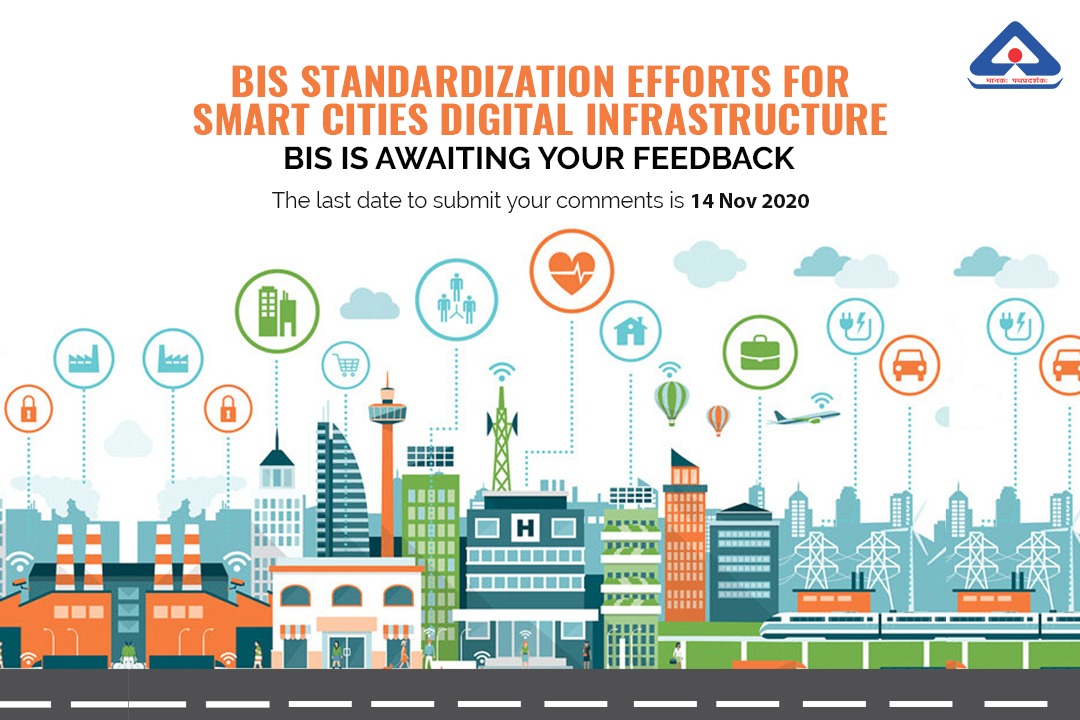

A smart city is one that can effectively leverage technology, infrastructure, public policy, government and citizen engagement to create an urban environment that fosters economic growth & productivity, innovation, social mobility, inclusiveness, and sustainability.
Cities are complex entities having Diverse Stakeholders, Diverse Geographical Entities, Diverse Services and Business Processes, and Diverse ICT Technologies. While it is almost impossible to engineer a smart city from scratch, it will be possible to adopt the right architectural framework along with appropriate practices and policies to nudge the evolution towards smart cities.
The three key principles for facilitating such an Emergence/Evolution towards a smart city ecosystem are Interoperability, Composability, and harmonization that enable efficient and effective integration of various systems, components and services of a City.
Bureau of Indian Standards (BIS), the national standards body of India, is developing standards for Smart Cities through several sectional committees under it. One of the sectional committees, LITD 28 Smart Infrastructure sectional committee is developing a comprehensive set of standards for ensuring a well harmonized, Secure, and sustainable Digital infrastructure across the Smart Cities and to facilitate the implementation of various Smart City projects.
The series of standards would be applicable across any geographical region that can encompass Smart Village to the entire nation.
The standard “IS 18000 Unified Digital Infrastructure – ICT Reference Architecture (UDI-ICTRA)” is the foundational standard in the series. The wide circulation draft of IS 18000 (Doc No LITD 28 (15990)) is presently available for public comments and the last date for sending comments is 14 Nov 2020. The document can be downloaded from here.
This draft standard provides a reference architecture for achieving a harmonized, Secure, and sustainable Digital infrastructure that can serve as a template for both the City Administrators, who are the consumers of such ICT based solutions, as well as the ICT Solution Providers who develop and deploy such solutions. The reference architecture includes functional reference models, technology reference models and information reference models.
The other standards in the series which are under development are as below.
| IS No | Title |
| IS 18001 | Unified Digital Infrastructure – Implementation Guidelines (under development) |
| IS 18002 | Unified Digital Infrastructure – Data Layer Reference Architecture (under development) |
| IS 18003-1 | Unified Data Exchange Part 1: Architecture (Available for public comment: LITD 28(14073)) |
| IS 18003-2 | Unified Data Exchange Part 2: API Specification (under development) |
| IS 18003-3 | Unified Data Exchange Part 3: API Test Specification (under development) |
| IS 18004 | Unified Digital Infrastructure: IoT System Reference Architecture (under development) |
| IS 18010-1 | Unified Digital Infrastructure: Last Mile Communication Reference Architecture (UDI LMCPS) (Under publication) |
| IS 18010-5-1 | UDI LMCPS Network Access Layer (IEEE 802.15.4) (Under publication) |
The above standards have also been referred to in the Model RFP being prepared by the Smart Cities Mission.
Written by:

Manikandan K
Scientist-D, Electronics and IT Department
Bureau of Indian Standards